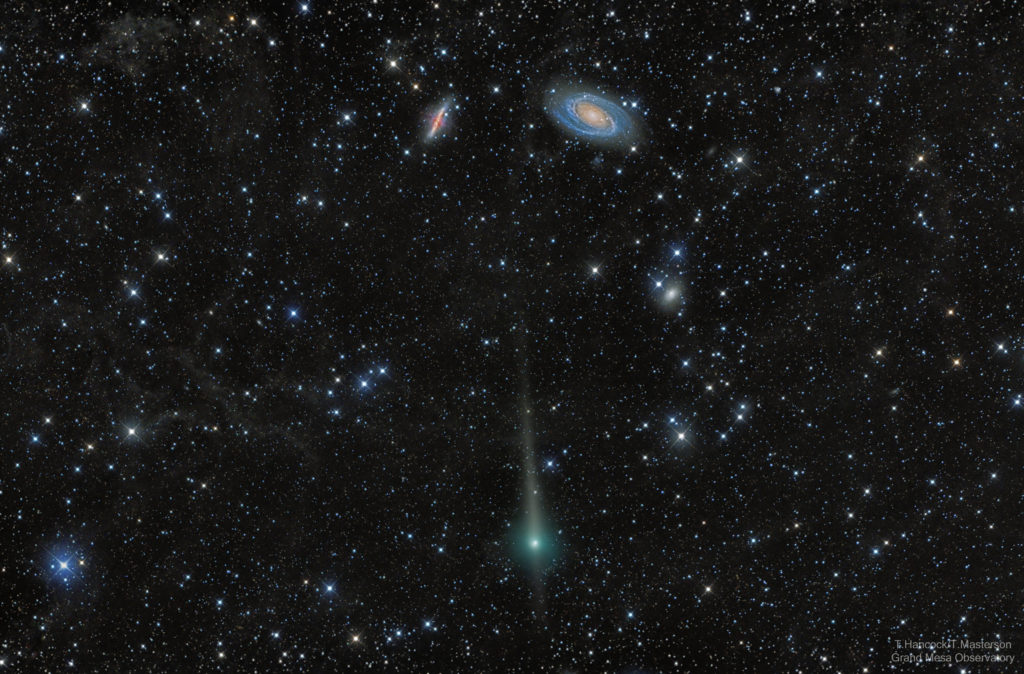
While a couple of promising comets have fizzled out this spring, the slow and steady Comet C/2017 T2 (PanSTARRS) is keeping astrophotographers happy as it moves through the northern constellation Ursa Major. On May 24, the comet passed the lovely pair spiral galaxies M81 and M82 near the bowl of the Big Dipper. The event was framed spectacularly in the above image by Terry Hancock and Tom Masterson using the Takahashi E-180 Astrograph at Grand Mesa Observatory in Colorado. This image is a testament to a high level of expertise and it shows how astrophotography at the hands of skilled and talented practitioners can approach high art.
The comet was discovered in October 2017 by the PanSTARRS survey in Maui when it was 8.5 astronomical units away, just inside the orbit of Saturn, and shone at 19th magnitude. It’s been making a leisurely approach to the inner solar system ever since. It reached 10th magnitude at the beginning of 2020, passed near the Double Cluster in Perseus on January 22, and reached perihelion on May 7. At the beginning of June the comet shines at a respectable 8th magnitude and is visible in a good pair of binoculars in dark sky. It’s a little too far north to be spotted by southern-hemisphere observers.
On its outbound trip this month, PanSTARRS ‘photo bombs’ a few more well-known and relatively bright stars and galaxies in Ursa Major and Canes Venatici. On, June 4, the comet passes less than a degree from the star Duhbe at the top of the Big Dipper’s bowl and spends the next 10 days inside the bowl. On June 15, it passes less than one degree from the star Phecda at the bottom of the bowl, and on June 16 it passes less than one degree from the galaxy Messier 109. On June 23, it enters Canes Venatici and passes less than one degree from the dusty spiral galaxy M106. And on June 30 it passes less than one degree from the star Chara. Mark your calendars for these passes and wander out to see this distant interloper from the Oort cloud. It won’t be passing this way again for another 550,000 years.
***